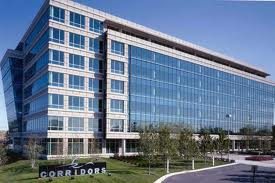 When you lease commercial property to be used as office space, your future landlord will mention terms such as rentable square footage and useable square footage when speaking about the rental cost. As opposed to having a single rent figure, these square footage calculations are used to determine just how much you’ll pay for your office space.
When you lease commercial property to be used as office space, your future landlord will mention terms such as rentable square footage and useable square footage when speaking about the rental cost. As opposed to having a single rent figure, these square footage calculations are used to determine just how much you’ll pay for your office space.
In the same discussion, common area costs will come up as well. Commercial tenants not only have to pay for the space that they use alone but also share the cost for maintaining the common areas with other tenants. The calculations may be a bit intimidating at first, however, with the right background information and a good tenant representative by your side, you’ll be able to figure out the details in no time.
What is Useable Square Footage?
When you want to calculate useable square footage, this will be the figure relating to the amount of space which you actively use. For example, your useable square footage is the square footage of your single office within an office building, if you lease an office space of this type.
What is Rentable Square Footage?
Rentable square footage is the amount of space which will include your office but also the restrooms, closets and other areas.
What is the Common Area Factor?
The common area factor is the amount of space which is shared by all office space tenants. This will include bathrooms, cleaning closets, lobbies, copy rooms and other shared sections of the office building. There are two main types of common areas: floor common area and building common area. The floor common area is the amount of tenant common areas which are located on your floor while the building common area is the part which everyone within the building shares. These two figures are added up to equal the total common area factor.
How Do These All Add Up?
Calculating the square footage figures can be difficult for new office space tenants but tenant representatives are well-versed in these types of calculations and will gladly help you to calculate the figures with ease. The basic calculation is rentable square footage = useable square footage x (1 + add-on %). The add-on percentage can be calculated this way: rentable square footage/useable square footage – 1. The add-on percentage is sometimes substituted with a common area factor percentage and you can determine which percentage your prospective landlord uses simply by inquiring with them.
These factors show that there is much more to commercial office space rent than just a flat figure. There are distinct calculations which go into determining commercial office space rent and these figures will dictate how much you pay for an office space you use as well as common areas which you share with other tenants. Understanding these figures is much easier to do when you have a tenant representative along with you for any and all negotiations. Your tenant representative will explain these factors in layperson terms and help you out with any questions which you may have along the way.






